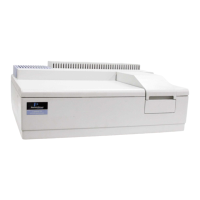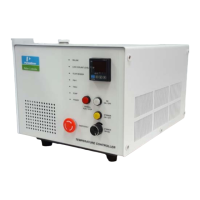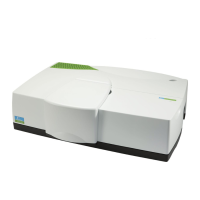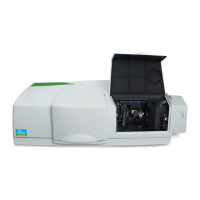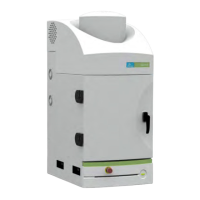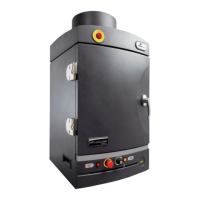Do you have a question about the PerkinElmer LS 55 and is the answer not in the manual?
Details safety requirements for the LS 55 Luminescence Spectrometer, including operating conditions and classifications.
Explains the meaning of caution and high voltage labels found on the instrument.
Provides contact information for technical assistance.
Details the technical specifications of the LS 55 Luminescence Spectrometer, including principle, source, detectors, and monochromators.
Defines key terms used in the manual, such as OPERATOR and RESPONSIBLE BODY.
Lists the part numbers and descriptions of items included in the shipping kit.
Provides step-by-step instructions for removing shipping clamps before operating the instrument.
Details how to connect the instrument to the electrical mains supply and accessory connectors.
Describes the RS232C controller socket and terminal block on the rear panel.
Explains the procedure for safely switching the LS 55 instrument and the PC on.
Describes the standard cellholder, its specifications, and installation/maintenance.
Details the stirred cellholder, its description, installation, maintenance, and operation.
Explains the Biokinetics accessory, its features like temperature sensing and event marking.
Covers the installation and operation of the Plate Reader accessory for microplates and flat samples.
Introduces the Fast Filter accessory for cell biology studies and its spectral properties.
Describes the polarizer accessory for polarization and anisotropy measurements.
Details the Low Temperature Accessory for measurements at liquid nitrogen temperature (77 K).
Explains the RS232C interface, communication parameters, and command syntax.
Lists and describes various error codes and command formats used with the instrument.
Describes the optical path, excitation and emission monochromators, and spectral ranges.
Illustrates the electronics diagram and signal path from photomultipliers to the PC.
Explains the operating modes: Fluorescence, Phosphorescence, and Chemi- and Bio-luminescence.
Details the procedure for safely removing the instrument's main cover.
Provides instructions for replacing the instrument's lamp.
Explains how to change the instrument's operating voltage by altering transformer connections.
Details how to change the mains fuse according to the operating voltage.
Details safety requirements for the LS 55 Luminescence Spectrometer, including operating conditions and classifications.
Explains the meaning of caution and high voltage labels found on the instrument.
Provides contact information for technical assistance.
Details the technical specifications of the LS 55 Luminescence Spectrometer, including principle, source, detectors, and monochromators.
Defines key terms used in the manual, such as OPERATOR and RESPONSIBLE BODY.
Lists the part numbers and descriptions of items included in the shipping kit.
Provides step-by-step instructions for removing shipping clamps before operating the instrument.
Details how to connect the instrument to the electrical mains supply and accessory connectors.
Describes the RS232C controller socket and terminal block on the rear panel.
Explains the procedure for safely switching the LS 55 instrument and the PC on.
Describes the standard cellholder, its specifications, and installation/maintenance.
Details the stirred cellholder, its description, installation, maintenance, and operation.
Explains the Biokinetics accessory, its features like temperature sensing and event marking.
Covers the installation and operation of the Plate Reader accessory for microplates and flat samples.
Introduces the Fast Filter accessory for cell biology studies and its spectral properties.
Describes the polarizer accessory for polarization and anisotropy measurements.
Details the Low Temperature Accessory for measurements at liquid nitrogen temperature (77 K).
Explains the RS232C interface, communication parameters, and command syntax.
Lists and describes various error codes and command formats used with the instrument.
Describes the optical path, excitation and emission monochromators, and spectral ranges.
Illustrates the electronics diagram and signal path from photomultipliers to the PC.
Explains the operating modes: Fluorescence, Phosphorescence, and Chemi- and Bio-luminescence.
Details the procedure for safely removing the instrument's main cover.
Provides instructions for replacing the instrument's lamp.
Explains how to change the instrument's operating voltage by altering transformer connections.
Details how to change the mains fuse according to the operating voltage.
| Type | Luminescence Spectrometer |
|---|---|
| Detector | Photomultiplier Tube (PMT) |
| Wavelength Range | 200-900 nm |
| Light Source | Xenon Lamp |
| Data Sampling Interval | 0.1-5 nm |
| Data Output | RS-232 |
| Power Requirements | 100-240 VAC, 50/60 Hz |
